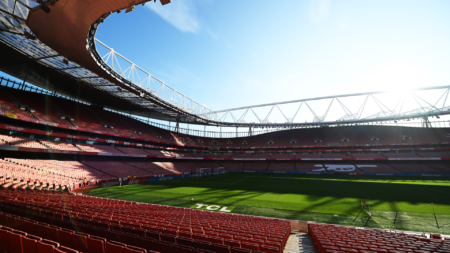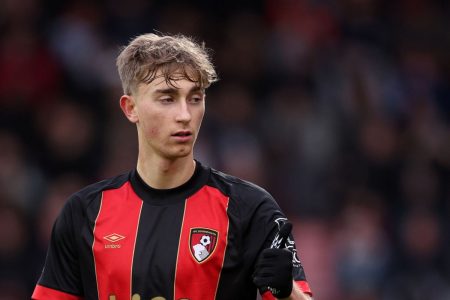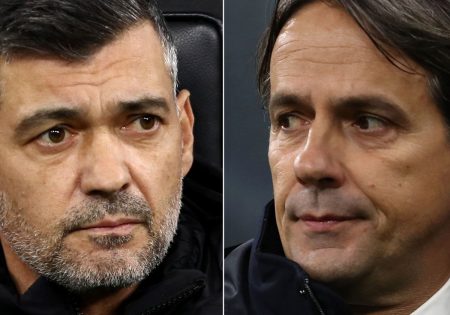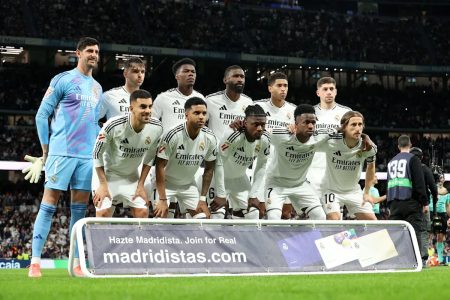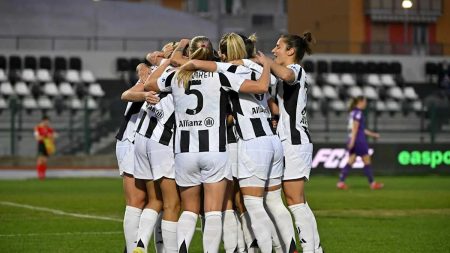Arsenal’s Title Challenge Revitalized
Arsenal prepares to face Manchester United on Sunday, hoping to regain momentum in their stuttering title challenge. After failing to score in back-to-back Premier League games against West Ham and Nottingham Forest, the Gunners exploded with a 7-0 victory over PSV in the Champions League. This sudden surge in offensive output raises the question: has Mikel Arteta finally discovered a potent attacking recipe with his makeshift lineup?
Mikel Merino’s Surprising Impact
With Kai Havertz sidelined due to injury, Arteta has had to rely on a trio of Leandro Trossard, Mikel Merino, and Ethan Nwaneri to lead the attack. Despite Havertz’s mixed performance as a forward, his absence has forced the team to adapt. Merino, who has been studying Havertz’s gameplay, has shown a striker’s instinct, as evidenced by his brace against Leicester. He often drops deeper into the midfield, creating confusion for United’s defenders. This strategic movement facilitates more space for other players to exploit, making Merino a crucial piece in Arsenal’s offensive puzzle.
Ethan Nwaneri: A Young Talent Filling Big Shoes
Ethan Nwaneri, at just 17, is being hailed as a potential replacement for the world-class Bukayo Saka. Against Manchester United, Nwaneri is expected to start on the right wing, a position Arsenal frequently uses due to the concentration of their best players in that area. However, the team has shifted to a more balanced attack, favoring the left flank in recent games. This change opens up more opportunities for Nwaneri to engage in one-on-one battles against United’s defense. Unlike Saka, who often positions himself on the touchline to create space, Nwaneri has the freedom to move centrally, adding another dimension to Arsenal’s attack. His ability to shoot with both feet and desire to isolate defenders in one-on-one situations could be pivotal in breaking down United’s defensive structure.
United’s Pivotal Role in Bypassing Arsenal’s High Press
Manchester United, under the new tactical setup, will play out in a 3-4-3 shape, while Arsenal maintains a robust 4-4-2 defensive formation. Arsenal’s press, which has been effective against top teams, could pose significant challenges for United. Bruno Fernandes, now operating as one of the two pivot midfielders, will be crucial in breaking this press. When the ball is played wide, United often switches the play with long cross-field passes, but this could leave them in a 3v1 situation favoring Arsenal. To counter this, Fernandes might push higher to keep Merino and Odegaard on their toes, potentially giving the defenders more time to pick out passes. The success of United’s play will largely depend on their central center-back, likely to be Harry Maguire. If Maguire can drop back alongside Andre Onana and create passing triangles, United might stand a chance of playing out of Arsenal’s press.
Tactical Adjustments for Key Battles
In the absence of their top stars, Arteta has been ingenious in balancing the attack. Against PSV, Arsenal saw a significant shift in their attacking dynamics, with more possession and attacks on the left flank. This change complicates the opposition’s defense, as it prevents them from focusing solely on one side. Nwaneri’s movement inside will attract the attention of the right wing-back, creating space for players like Jurrien Timber to overlap and push forward. The combination of Merino dropping deep and Nwaneri’s central movements could force United’s defenders into making critical errors, providing Arsenal with numerous scoring opportunities.
Arsenal’s Impressive Performance Against PSV
In their recent Champions League clash with PSV, Arsenal delivered a masterclass in both defense and attack. Despite starting without a recognized striker, the Gunners were clinical with their finishing, thanks to quick goals from Jurrien Timber and Ethan Nwaneri. Every player contributed significantly to the team’s performance, showcasing a well-oiled tactical machine. However, the match was marred by a few careless moments, including a rash challenge by Myles Lewis-Skelly that led to his early substitution. Despite this, Arsenal’s relentless pressure and efficient play continued after the break, with two goals in quick succession effectively sealing the match. The team’s overall display, especially in the first half, was a testament to Arteta’s defensive and offensive blueprint, which continues to yield impressive results.


